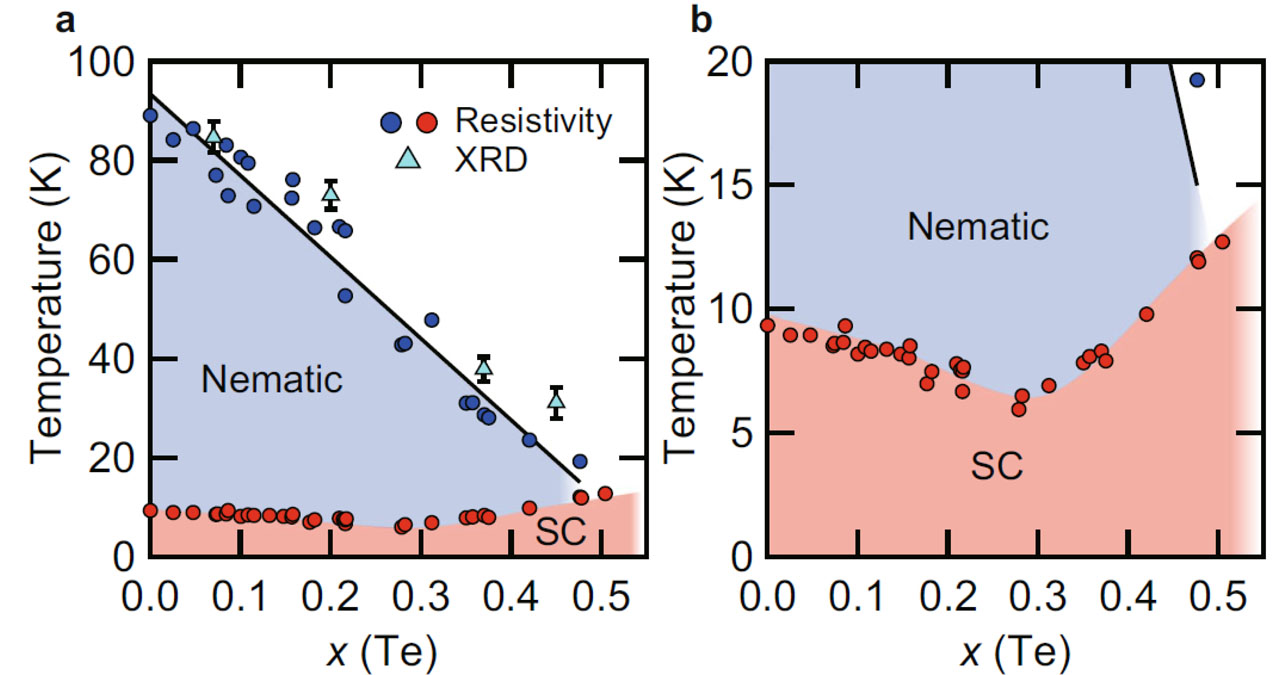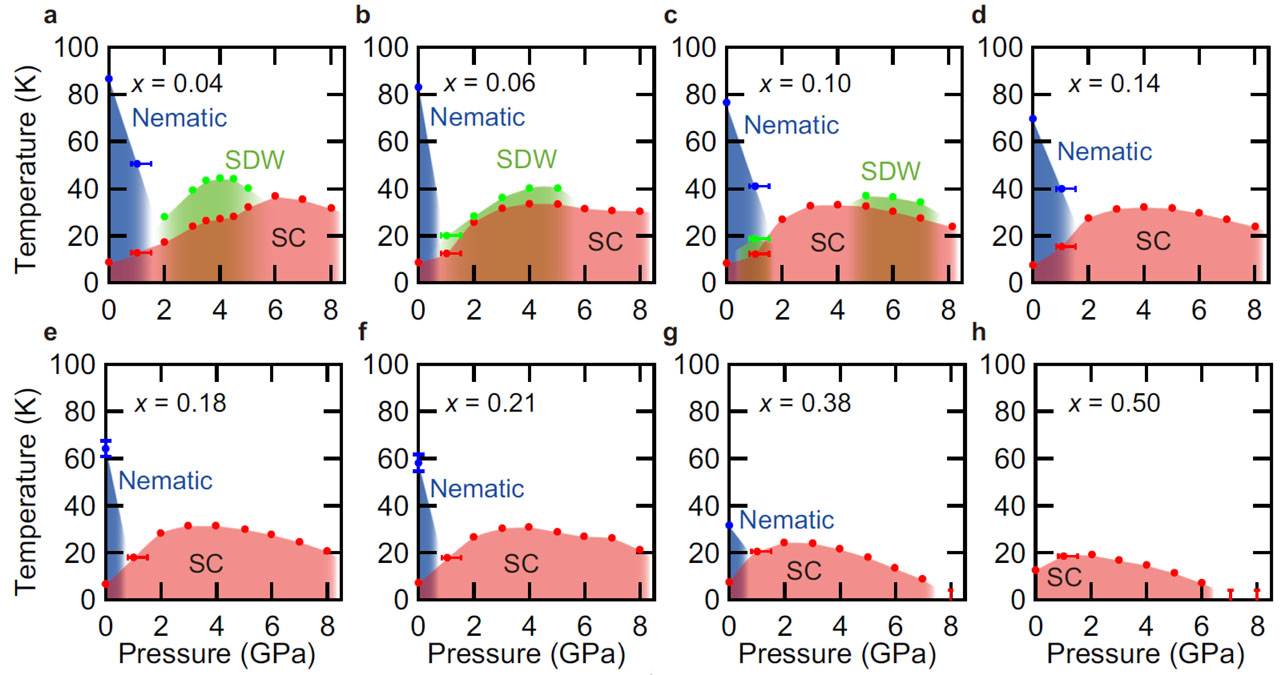High-Pressure Phase Diagrams of FeSe1-xTex: Correlation Between Suppressed Nematicity and Enhanced Superconductivity
PI of Joint-use project: T. ShibauchiHost lab: Uwatoko Group
The interplay among magnetism, electronic nematicity, and superconductivity is the key issue in strongly correlated materials including iron-based, cuprate, and heavy-fermion superconductors. Magnetic fluctuations have been widely discussed as a pairing mechanism of unconventional superconductivity, but recent theory predicts that quantum fluctuations of nematic order may also promote high-temperature superconductivity. This mechanism of unconventional superconductivity is distinctly different from the one based on spin fluctuations, and its experimental verification remains elusive. This is partly due to the closeness between nematic and antiferromagnetic orders in iron-pnictide superconductors, and the enhanced superconductivity can be found near both ends of these two ordered phases, where both magnetic and nematic fluctuations are enhanced. FeSe with a superconducting transition temperature Tc ≈ 9 K serves as an ideal platform to study the relationship between the nematicity and superconductivity, because unlike other iron-based superconductors its nematic order below the structural transition at Ts ≈ 90 K is accompanied by no magnetic order [1].
In this study, we have succeeded in growing high-quality single crystals of FeSe1−xTex superconductors, another family of FeSe-based materials, which we use to study the electronic phase diagram in a wide range of Te composition under pressure [2]. The single crystals of FeSe1−xTexwere grown by the chemical vapor transport technique, which overcomes the phase separation issue reported in the previous crystal growth for a low Te composition range. The resistivity and synchrotron X-ray diffraction measurements show that the electronic nematic transition temperature Ts is monotonically suppressed with increasing Te composition. As shown in Fig. 1, the nematic transition can be completely suppressed by ~50% substitution, while the superconducting transition temperature Tc shows a nonmonotonic composition dependence. We find that this nonmonotonic dependence of Tc(x) does not correlate with the x(Te) dependence of residual resistivity ratio, implying that the Tc increase found for x(Te) > 0.3 has an intrinsic origin.

Fig. 1. a, Nematic and superconducting transition temperatures as a function of Te composition x(Te). The blue and red circles represent the nematic (Ts) and superconducting (Tc) transition temperatures, respectively, determined by the resistivity measurements. The light blue triangles represent Ts, determined by the splitting of the Bragg peaks in the XRD measurements. b, The same as in a, but the temperature range is 0–20 K.
Figure 2 shows the high-pressure phase diagrams of FeSe1−xTex up to 8 GPa determined by the resistivity measurements performed by using the constant-load cubic anvil cell in Uwatoko group, ISSP, University of Tokyo. When Te composition x(Te) becomes larger than 0.1, the high-pressure magnetic order disappears, whereas the pressure-induced superconducting dome near the nematic end point is continuously found up to x(Te) ≈ 0.5. In contrast to FeSe1−xSx, enhanced superconductivity in FeSe1−xTex does not correlate with magnetism but with the suppression of nematicity. It is generally expected that the quantum fluctuations of electronic order are intensified near the end point of the associated order, so in the present case, nematic fluctuations are expected to be enlarged when the nematic order is suppressed wither by the Te substitution or pressure. Our results show that the superconducting dome exists near the end point of nematic order in FeSe1−xTex, near which we have no magnetic order. These results highlight the paramount role of nonmagnetic nematic fluctuations for high-temperature superconductivity in this system.
References
- [1] See, for a review, T. Shibauchi, T. Hanaguri, and Y. Matsuda, J. Phys. Soc. Jpn. 89, 102002 (2020).
- [2] K. Mukasa, K. Matsuura, M. Qiu, M. Saito, Y. Sugimura, K. Ishida, M. Otani, Y. Onishi, Y. Mizukami, K. Hashimoto, J. Gouchi, R. Kumai, Y. Uwatoko, and T. Shibauchi, Nat. Commun. 12, 381 (2021).

